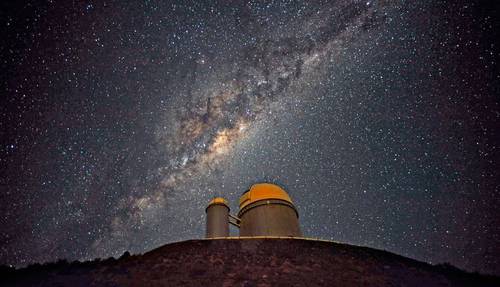In the past 30 years, 5,655 exoplanets have been discovered (they are outside the solar system), said Yilen Gómez Maqueo Chew, researcher at the Astronomy Institute of the National Autonomous University of Mexico (UNAM).
The discovery of these celestial bodies is fundamental for the advancement of astronomy, since before 1992, when the first one was discovered, everything that was known about solar systems was known from the study of our own.
According to the researcher, the discovery of each exoplanet is an opportunity for astronomers to expand the understanding of the different stars in the universe; better study how planetary systems form and evolve, and gain clues about the history and fate of the universe.
Doctor in physics from Vanderbilt University, in Nashville, in the United States, explained that previously it was considered that planetary systems were organized in such a way that the smallest planets were the closest to the Sun, and the furthest ones were the largest. But with the discovery of 51 Pegasi b, a giant body near its star, it was realized that this rule did not apply.
The discovery in 1992 of 51 Pegasi b is a discovery that revolutionized astronomy, opening new areas of research
he added.
Gómez Maqueo Chew maintained that exoplanets are not bright; To detect them in the universe, astronomers use the transit method, a technique that consists of observing the decrease in the brightness of a star, which occurs when an exoplanet passes in front of it.
In the country, the search for exoplanets is in charge of the Saint-Ex project, of which the expert is international coordinator.
Saint-Ex, Named in honor of Antoine de Saint-Exupéry, author of The little Prince, It is the first and only telescope in Mexico dedicated to the search for extrasolar planets, installed in 2018 at the National Astronomical Observatory of San Pedro Mártir, in Baja California, attached to the UNAM.
The work on this telescope is coordinated with four installed in Chile and two in the Canary Islands.
With that telescope, We are dedicated to searching for exoplanets around the coldest and smallest stars that exist in the galaxy, which we call ultracold dwarf stars.
accurate.
Saint-Ex began astronomical observations in 2019 in order to analyze light curves on a routine basis. In 2020, the first report was published, announcing the discovery of two exoplanets orbiting the star TOI-1266.
It is “a red dwarf star located about 120 light years from Earth; It has two exoplanets orbiting it, designated TOI-1266 b, smaller than Neptune but larger than Earth, and TOI-1266 c, larger than the blue planet and smaller than the ice giant.
In June 2022, lightning struck Saint-Ex, For a year and a half it was not used, as the necessary parts for its repair were awaited, since it is specialized equipment, which has only one spare parts supplier in the world. It was at the end of 2023 when it was launched again.
Gómez Maqueo Chew assured that 2024 looks very good for exoplanet observation work, since they have a new control system for the telescope and observatory, which allowed them to start obtaining routine data again in January
.
The astronomer highlighted that Saint-Ex it is a successful scientific infrastructure; Since 2019, when we began the observation, until now, we have visualized 80 stars, confirmed four planetary systems, and we have contributed data for another nine, and what remains to be discovered in 2024, as we will continue searching for extrasolar planets
.
